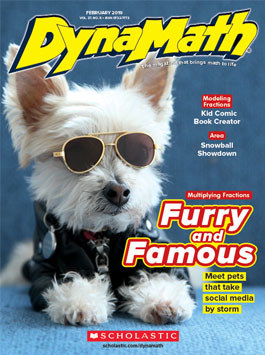Part of SEL is developing healthy conversation skills. To help facilitate conversations with my students, I created a real-world math activity using DynaMath.
The October 2018 issue features a story about Asia Newson, an inspiring teen who started a candle-making business when she was 5! The article includes a hands-on math activity where students create a line plot with string measuring different lengths. (The string represents the candlewicks.)
Hands-on activities are a great way for students to discuss how they can be active participants, what they can learn from each other, and explain why they might disagree or agree with another.
My students used rulers to measure the “wicks” with the pieces of twine that I prepared beforehand in sandwich bags.
Then we talked about what a line plot looks like. Students who needed reinforcement could play the game Build a Line Plot.



